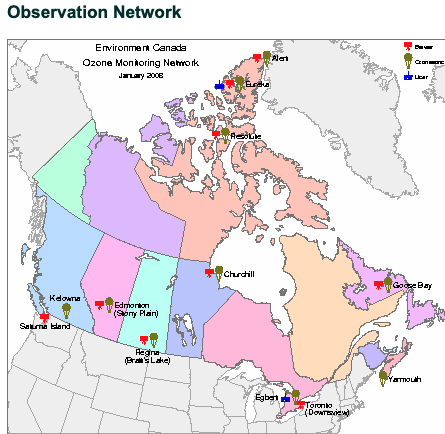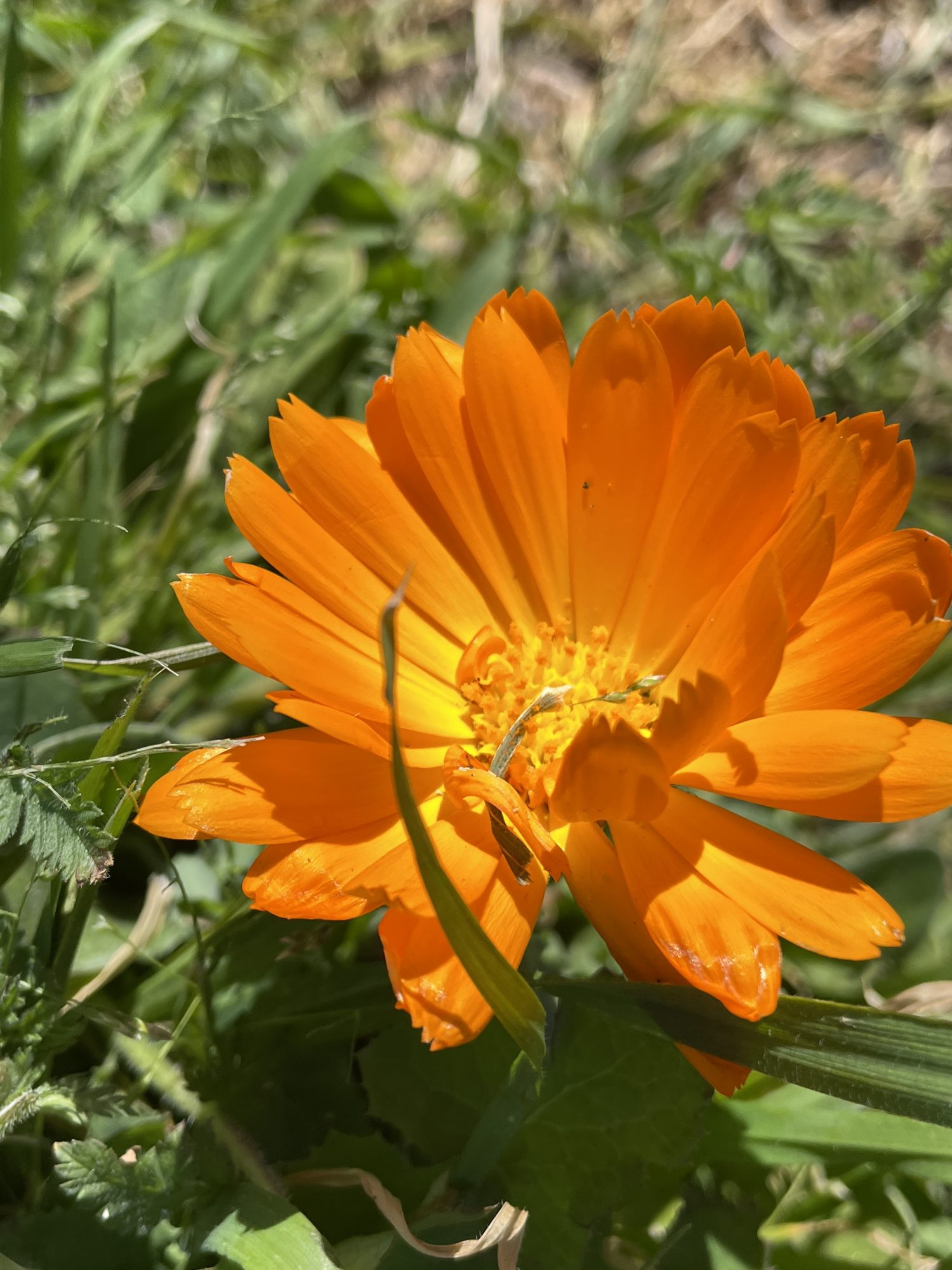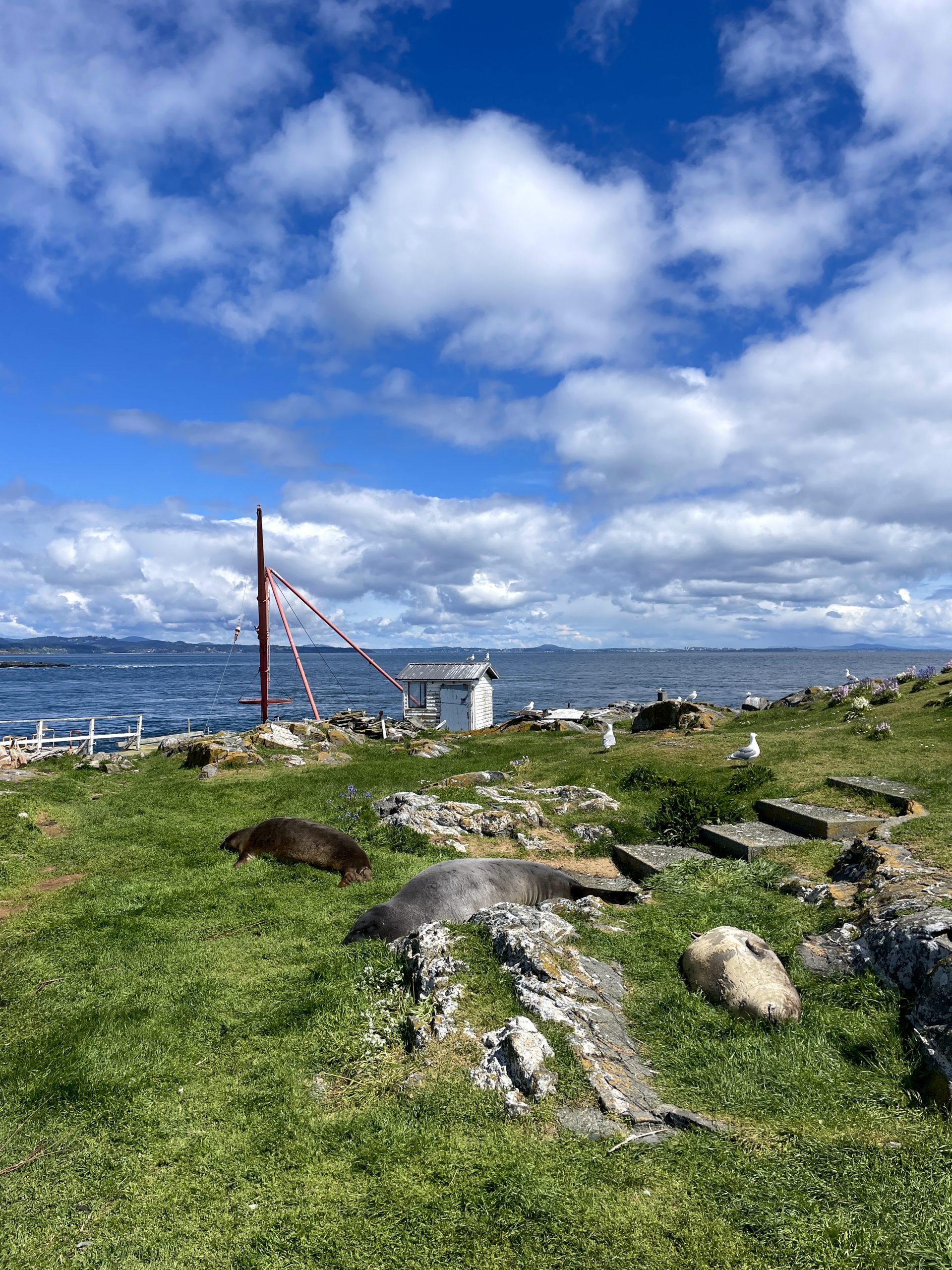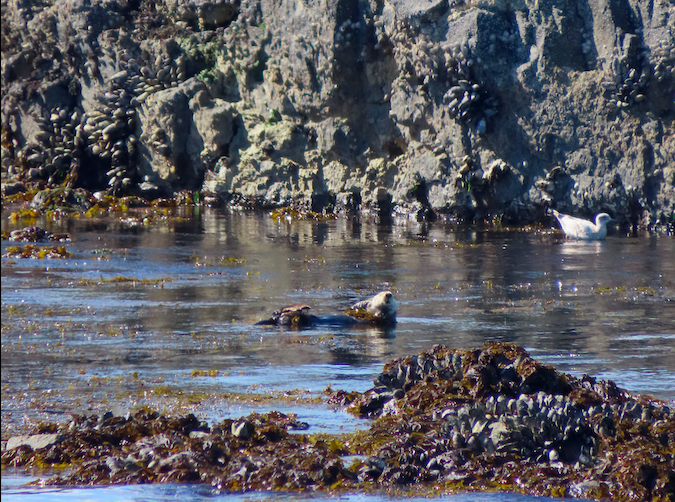Ultraviolet (UV) radiation is electromagnetic radiation from the sun of a wavelength shorter than the wavelength of the visible region, but longer than soft X-rays. It is subdivided into UVA ( 380-315 nm) also called long wave or “blacklight” and UVB (315-280 nm) and UVC (<280 nm) also called short wave or “germicidal”.
This is todays’s level of Ultra Violet radiation at Race Rocks. If after dark, the top line shows the level to which it rose with today’s sunlight.
The sun emits uv radiation in UVA,UB+VB,and UVC bands, but because of absorption in the atmosphere’s ozone layer, 99% of the ultraviolet radiation that reaches the Earth’s surface is UVA. (Some of the UVC light is responsible for the generation of the ozone.)
Effects of UV on organisms at Race Rocks:
Since no research has been done on this factor at Race Rocks, the following are several papers we have referenced which relate to UV as an Abiotic Factor.
1. In a paper sourced from the Photosynthesis Research (Historical Archive) by SpringerLink. the authors shows that four species of phytoplankton and two species of seagrass had inhibition of photosynthesis. It is interesting to note that benthic macroalgaes were the least sensitive to UV-B radiation, perhaps because of adaptation due to UV-B screening compounds. This research was conducted in the Antarctic,where rapid ozone thinning was measured. At the latitude of Race Rocks however, a major concern is ozone depletion over the Northern Hemisphere which could lead to similar effects on our resident algae.
The effect of UV-B radiation on photosynthesis and respiration of phytoplankton, benthic macroalgae and seagrasses “A. W. D. Larkum1 and W. F. Wood, School of Biological Sciences, University of Sydney, 2006, NSW, Australia
Received: 17 June 1992 Accepted: 17 December 1992
Abstract: Several species of marine benthic algae, four species of phytoplankton and two species of seagrass have been subjected to ultraviolet B irradiation for varying lengths of time and the effects on respiration, photosynthesis and fluorescence rise kinetics studied. No effect on respiration was found. Photosynthesis was inhibited to a variable degree in all groups of plants after irradiation over periods of up to 1 h and variable fluorescence was also inhibited in a similar way. The most sensitive plants were phytoplankton and deep-water benthic algae. Intertidal benthic algae were the least sensitive to UV-B irradiation and this may be related to adaptation, through the accumulation of UV-B screening compounds, to high light/high UV-B levels. Inhibition of variable fluorescence (Fv) of the fluorescence rise curve was a fast and sensitive indicator of UV-B damage. Two plants studied, a brown alga and a seagrass, showed very poor recovery of Fv over a period of 32 h.”
Effects of increased solar ultraviolet radiation on terrestrial ecosystems
Journal of Photochemistry and Photobiology B: Biology 46 (1998) 40–52
M.M. Caldwell , L.O. Bjorn , J.F. Bornman , S.D. Flint , G. Kulandaivelu ,
A.H. Teramura and M. TeviniIn this paper, they discuss how ” elevated solar UV-B radiation associated with stratospheric ozone reduction may exert effects on terrestrial ecosystems through actions on plants, microbes, and perhaps on some animals.At the ecosystem level, the effects are less well understood than at the molecular and organismal levels. Many of the most important, yet less predictable, consequences will be indirect effects of elevated UV-B acting through changes in the chemical composition and form of plants and through changes in the abiotic environment. These indirect effects include changes in the susceptibility of plants to attack by insects and pathogens in both agricultural and natural ecosystems; the direction of these changes can result in either a decrease or an increase in susceptibility. Other indirect effects of elevated UV-B include changes in competitive balance of plants and nutrient cycling……. Other ecosystem-level consequences of elevated UV-B radiation are emerging and their magnitude and direction will not be easily predicted.>3. The Effect of Ultraviolet Vision on Predation
This reference from the Johnson Lab for Sensory Biology at Duke University, deals with the issue of ultraviolet transparency.”Recent research has shown that UV radiation is more abundant in near-surface ecosystems than previously supposed. This presents two problems for zooplankton that have evolved a concealment strategy based on transparency….UV vision has been demonstrated in many marine species and it has been conservatively estimated that there is sufficient UV light for vision down to 200 m in clear ocean water.” This suggests some important considerations for the changing of Ultraviolet availability in the surface waters of the ocean.Further, ” Reports of decreasing ozone levels at polar, temperate, and tropical latitudes create an additional complication, because transparent zooplankton may face concomitant increases in UV radiation. A responsive increase in UV-protective pigmentation (at either an individual or population level) increases UV visibility, resulting in potentially increased predation or decreased feeding success. A responsive increase in depth may decrease access to prey, phytoplankton, or warm water.”
This is a good in depth article about Solar ultraviolet radiation effects on Biological Systems : Diffey, B. L. 1991. Solar ultraviolet radiation effects on biological systems. Review in Physics in Medicine and Biology 36 (3): 299-328.4. The Effect of Unilateral Ultraviolet Light on the Development of the Fucus egg. ( PDF)From the Discussion: When Fucus eggs which have been fertilized for a sufficient length
of time are irradiated unilaterally with monochromatic ultraviolet light
(),2804/~) of adequate dosage, 97-100 per cent form rhizoids on the halves
of the eggs away from the source of radiation . Other implications of varying levels of UV exposure are discussed. Further searching on Google will indicate other articles that shed more light on this topic.
The UV Index plots are based on ground-based measurements by Brewer spectrophotometers carried out by Science and Technology Branch
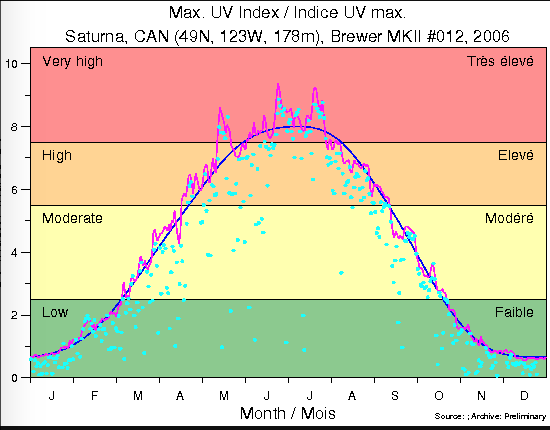 .Link to Saturna Island Graph.. The nearest Federal Canada UV recording station
.Link to Saturna Island Graph.. The nearest Federal Canada UV recording station


